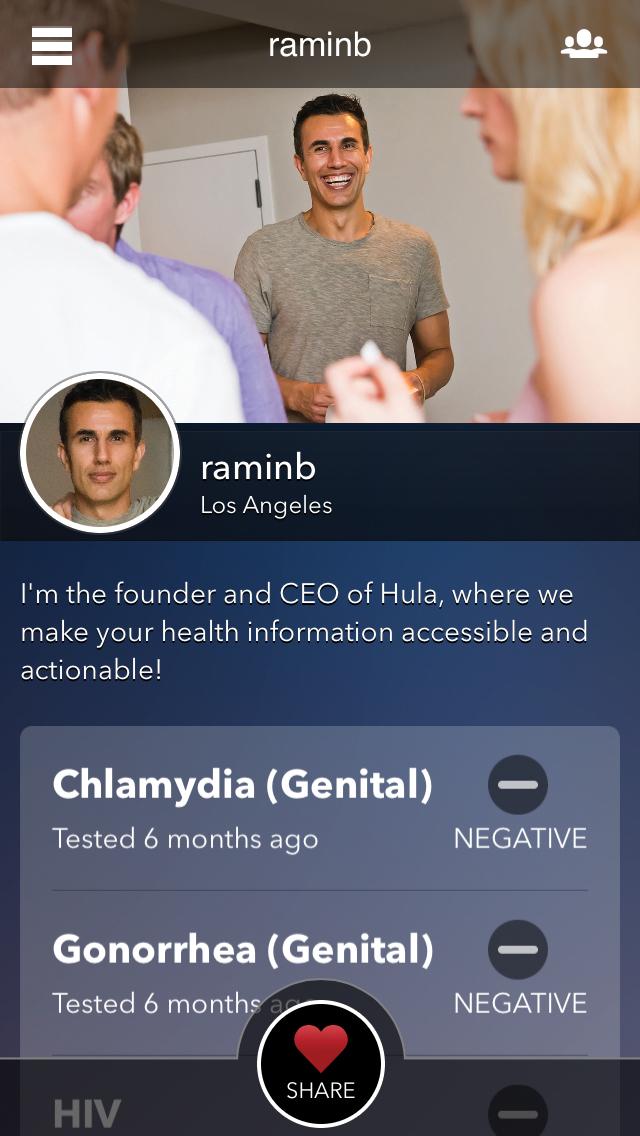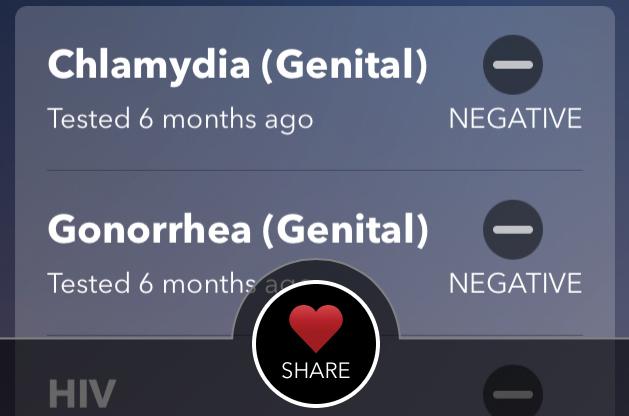
Ramin Bastani had no idea his life would change forever when he was slapped in the face by a date in 2010.
“I was shocked. It all happened in a few seconds,” said Bastani.
He got hit not because of inappropriate behavior, but because he was curious about whether or not the woman had been tested for sexually transmitted infections recently.
Fastforward to this year, the incident inspired Bastani to develop the Hula app.
Hula, the first app of its kind, is available for iPhone and has two main functions.
The first helps users find locations where they can get tested for STIs. Various filters can find free clinics, centers where a user’s insurance plan is accepted or Spanish speaking clinics, among others. The app can also locate testing centers that cater to specific groups like youth, women or members of the lesbian, gay, bisexual, transgender and queer community.
The second function allows users to have their test results sent to the app quickly and securely so there’s no waiting or guess work. Results can’t be uploaded by users, only directly from healthcare providers, and come with a timestamp to ensure accuracy.
There are currently 16 locations in the Los Angeles area that use the app and getting test results is as simple as asking to have them sent through Hula during each visit.
Once received, the test results can be shared with potential partners.
“Think of it as a modern version of ‘I’ll show you mine if you show me yours,’” said Bastani.
Users have the option of creating either a public or private profile.
Public profiles can be seen by anyone but can’t be located by a name search. Sharing results for public profiles is as simple as sending a link. They can also be linked to social media and dating apps.
Private profiles, the default setting, can only be viewed by “friending” someone. It works similar to Facebook, except your profile contains your STD status.
Considering that a 2013 report by the Center for Disease Control shows the rates for chlamydia and gonorrhea are highest among Americans ages 15-24, getting tested is important for sexually active young people.
“The high incidence and overall prevalence of STIs in the general population suggests that many Americans are at substantial risk of exposure to STIs, underscoring the need for STI prevention,” said the report.
The idea is that Hula will make getting tested less stressful and give people a verifiable way to check someone’s STI status before they hook up.
Bastani and his team of developers and healthcare advisers also hope the app will bring awareness to the issue of STIs and getting tested.
“It’s helping people to change their behavior,” he said.
In an age of stolen identities and security breaches, Hula is doing everything possible to keep user medical information safe.
Hula complies with the Health Insurance Portability and Accountability Act which sets regulations for security, privacy, and access to medical records.
They do this by encrypting all data and keeping employee access to a minimum.
“Our team (has) been in the healthcare field for a number of years and (has) built this system,” Bastani said regarding privacy issues.
According to another report from the same CDC study, approximately 110 million Americans have an STI.
Sexually transmitted infections cost the U.S. health care system $16 billion every year and that’s not including multiple treatments for one infection or indirect costs such as loss of productivity.
“I know they’re (STIs) serious but I know if I use protection I’ll be fine,” said junior Michael Martinez, English major.
The study also shows untreated infections are especially bad for women.
“Both young men and young women are heavily affected by STDs — but young women face the most serious long-term health consequences. It is estimated that undiagnosed STDs cause 24,000 women to become infertile each year,” according to the CDC.
Alarmingly, the CDC speculates that in reality all the numbers are actually much higher because of undiagnosed or unreported cases of STIs.
“This isn’t a fun little app, it’s a personal healthcare record,” said Bastani.
Although they’re hesitant to give out the exact number of users, the Hula team predicts over 100,000 people will be using the app by the end of 2014.






